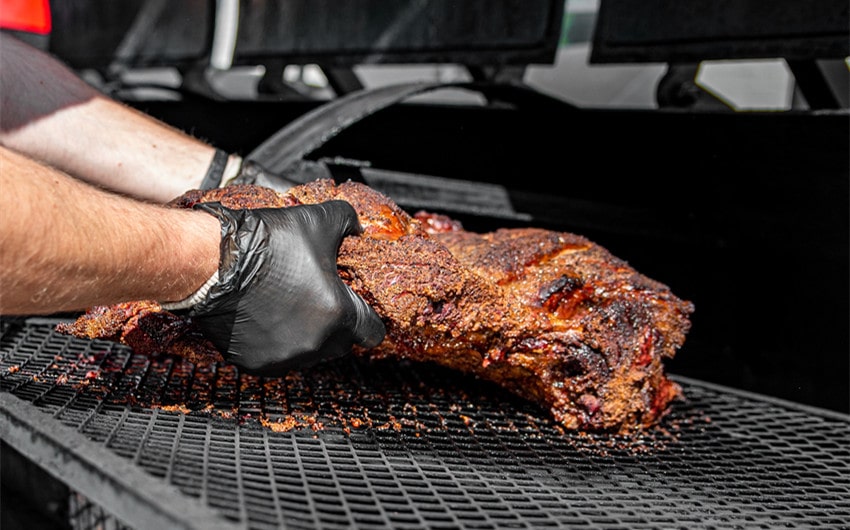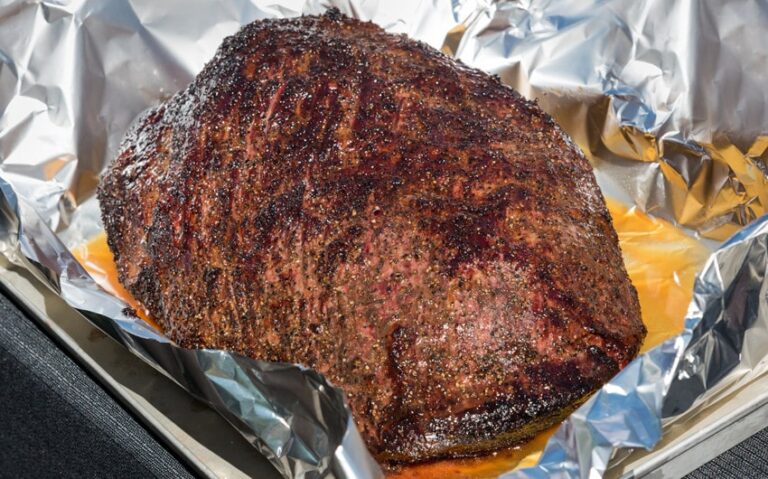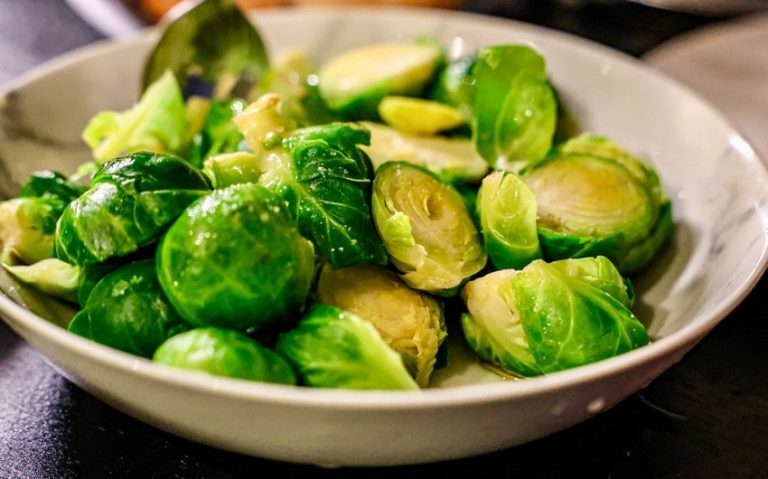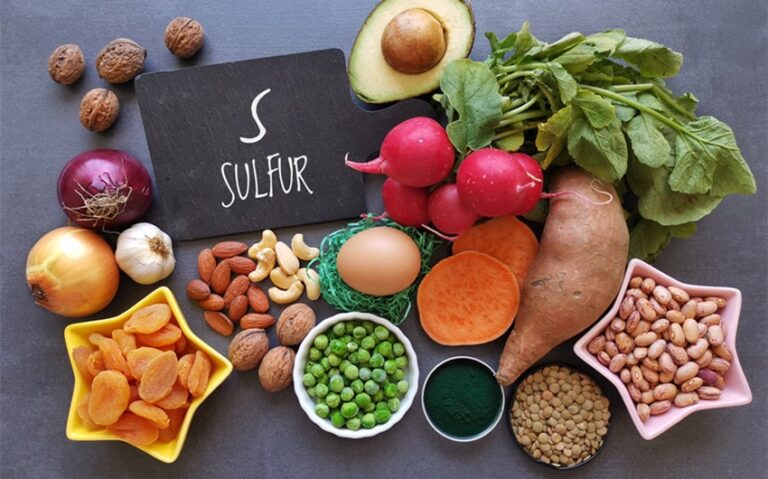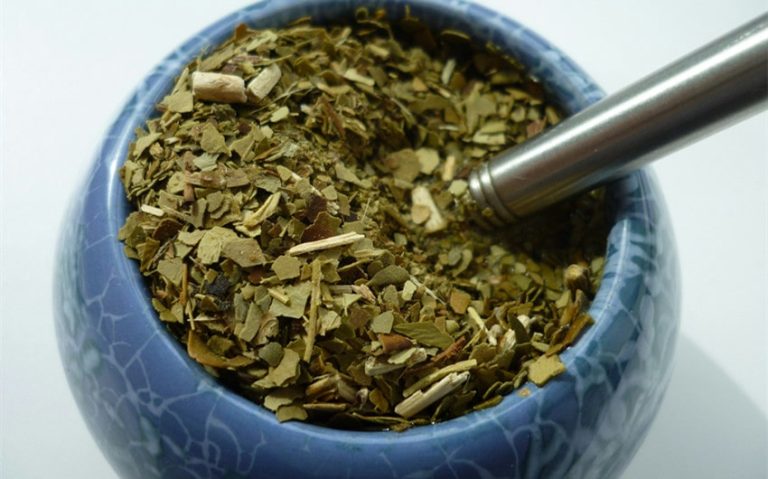11 Best Meats to Smoke for Flavorful BBQ Feasts
Smoking meat is a timeless tradition that brings out deep, rich flavors in your favorite cuts. Whether you’re a seasoned pitmaster or a backyard BBQ enthusiast, knowing which meats to smoke can make all the difference. From the tender brisket to the flavorful pork shoulder, each type of meat offers a unique experience.
In this guide, we’ll explore the top choices to help you create mouthwatering dishes. Get ready to impress your friends and family with the best meats to smoke.
11 Best Meats to Smoke
Smoking meat is an art that transforms simple cuts into rich, flavorful dishes. Here are 11 of the best meats to smoke, each offering unique tastes and textures for a delicious BBQ experience.
1. Beef Brisket
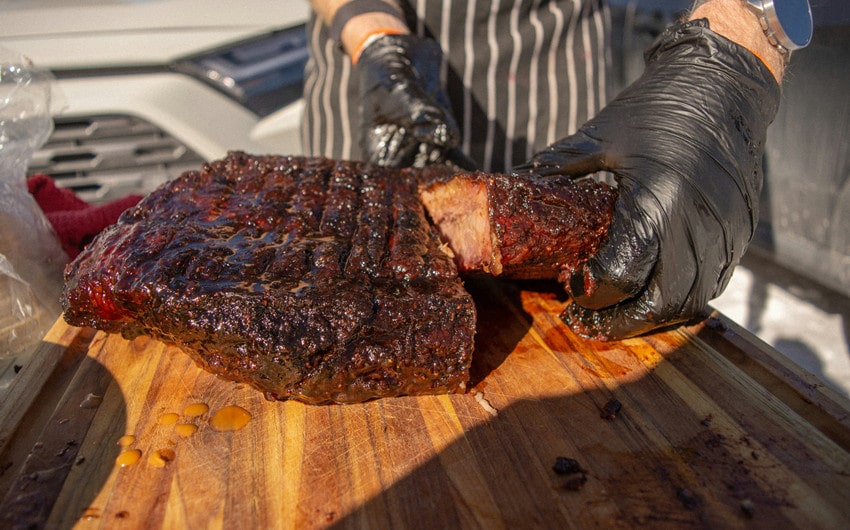
Brisket is a large, tough cut of meat that comes from the chest of the cow. It consists of two parts: the flat cut and the point cut. The flat cut is leaner, while the point cut has more fat and marbling, making it more flavorful.
Trim the brisket to remove excess fat, leaving about 1/4 inch of fat cap. Apply a generous rub of salt, black pepper, paprika, garlic powder, onion powder, and brown sugar. Let it sit in the refrigerator for at least a few hours or overnight.
Smoking Tips: Preheat your smoker to 225°F. Place the brisket fat side up in the smoker. Smoke until the internal temperature reaches 195°F to 205°F, which typically takes about 1 hour per pound. Consider wrapping the brisket in foil or butcher paper once it reaches 160°F to help retain moisture. Let the brisket rest for at least 30 minutes before slicing against the grain.
2. Beef Ribs
Beef ribs, such as short ribs and back ribs, are known for their rich, beefy flavor and tender texture when properly smoked.
Remove the membrane from the back of the ribs for better smoke penetration. Apply a rub consisting of salt, black pepper, garlic powder, onion powder, and a touch of cayenne pepper for heat. Let the ribs sit for a few hours to absorb the flavors.
Smoking Tips: Preheat your smoker to 225°F. Place the ribs in the smoker and cook for about 6 hours, or until they reach an internal temperature of 200°F to 205°F. Consider using the 3-2-1 method: smoke the ribs unwrapped for 3 hours, wrap in foil and cook for another 2 hours, then unwrap and cook for the final hour to develop a nice crust. Let the ribs rest before serving.
3. Beef Chuck Roast
Chuck roast is a versatile cut that is relatively inexpensive and becomes incredibly tender and flavorful when smoked.
Trim any excess fat from the roast. Season it with a rub made of salt, black pepper, paprika, garlic powder, onion powder, and thyme. Allow it to marinate for a few hours.
Smoking Tips: Preheat your smoker to 250°F. Place the chuck roast in the smoker and cook until it reaches an internal temperature of 195°F to 205°F, which usually takes about 6 to 8 hours. Consider wrapping the roast in foil midway through the cooking process to retain moisture. Let it rest for at least 30 minutes before slicing or shredding.
4. Pork Shoulder (Boston Butt)
Pork shoulder, also known as Boston butt, is a well-marbled cut that comes from the upper part of the pig’s shoulder. It’s ideal for making pulled pork due to its high fat content, which renders down during smoking, keeping the meat moist and flavorful.
Trim any excess fat, leaving a thin layer for moisture. Apply a dry rub made of salt, black pepper, paprika, garlic powder, onion powder, and brown sugar. Let it sit in the refrigerator for several hours or overnight to enhance the flavor.
Smoking Tips: Preheat your smoker to 225°F. Place the pork shoulder in the smoker and cook until it reaches an internal temperature of 195°F to 205°F, which usually takes about 1.5 hours per pound. Consider wrapping the shoulder in foil or butcher paper once it hits 160°F to retain moisture. Let it rest for at least 30 minutes before shredding it with forks.
5. Pork Ribs
There are several types of pork ribs to consider: baby back ribs, spare ribs, and St. Louis-style ribs. Each offers a different balance of meat, fat, and bone, providing a range of textures and flavors. Here’s a closer look at baby back ribs and spare ribs:
- Baby Back Ribs: These are smaller, leaner ribs taken from the upper part of the ribcage. They cook faster and are typically more tender.
- Spare Ribs: These are larger, meatier ribs from the lower part of the ribcage, with more fat and connective tissue, which makes them flavorful but requires longer cooking times.
- St. Louis-Style Ribs: These are spare ribs trimmed to a uniform rectangular shape, making them easier to cook and present.
Remove the membrane from the back of the ribs to allow better smoke penetration. Apply a rub of salt, black pepper, paprika, garlic powder, onion powder, and a bit of cayenne pepper for heat. Let the ribs sit for a few hours to absorb the flavors.
Smoking Tips: Preheat your smoker to 225°F. Place the ribs in the smoker and cook for about 5 to 6 hours, or until they reach an internal temperature of 190°F to 203°F. For a foolproof method, use the 3-2-1 technique: smoke the ribs unwrapped for 3 hours, wrap in foil and cook for another 2 hours, then unwrap and cook for the final hour to develop a crust. Let the ribs rest before serving.
6. Pork Belly
Pork belly is a fatty cut from the underside of the pig, known for its rich flavor and tender texture. It’s the cut used to make bacon, but when smoked, it can be served as a decadent main dish.
Score the fat side of the pork belly in a crosshatch pattern to help render the fat and allow the rub to penetrate. Season with a mixture of salt, black pepper, paprika, garlic powder, onion powder, and brown sugar. Let it marinate for several hours or overnight.
Smoking Tips: Preheat your smoker to 225°F. Place the pork belly in the smoker and cook until it reaches an internal temperature of 195°F to 200°F, which usually takes about 5 to 6 hours. For a crispy exterior, increase the temperature to 450°F for the last 15 to 20 minutes. Let the pork belly rest for at least 15 minutes before slicing.
7. Chicken

Whole chicken, thighs, and wings are the most popular cuts for smoking. Whole chickens offer a complete experience with both white and dark meat, while thighs and wings are great for smaller meals or appetizers.
Start by brining the chicken in a solution of water, salt, sugar, and spices for at least 4 hours, or overnight. This helps the meat retain moisture and adds flavor. After brining, rinse the chicken and pat it dry. Apply a dry rub made of salt, black pepper, paprika, garlic powder, onion powder, and a touch of brown sugar.
Smoking Tips: Preheat your smoker to 250°F. Place the chicken in the smoker, breast side up for whole chickens. Smoke until the internal temperature reaches 165°F in the breast and 175°F in the thigh, which usually takes about 3 to 4 hours for a whole chicken. If smoking thighs or wings, they typically take about 1.5 to 2 hours. Let the chicken rest for 10 minutes before carving or serving.
8. Turkey
Smoking turkey, especially around the holidays, adds a unique flavor and keeps the meat juicy. It’s a great alternative to traditional roasting and can be a show-stopping centerpiece for any meal.
Brine the turkey in a mixture of water, salt, sugar, and spices for at least 12 hours, or up to 24 hours. Rinse and pat dry the turkey after brining. Apply a rub of salt, black pepper, paprika, garlic powder, onion powder, and dried herbs like thyme and sage. Be sure to rub under the skin as well.
Smoking Tips: Preheat your smoker to 225°F. Place the turkey in the smoker, breast side up. Smoke until the internal temperature reaches 165°F in the breast and 175°F in the thigh, which typically takes about 30 to 40 minutes per pound. To prevent the breast meat from drying out, consider covering it with foil once it reaches 160°F. Let the turkey rest for at least 30 minutes before carving.
9. Duck
Duck has a rich, flavorful meat that is well-suited for smoking. The higher fat content of duck helps keep the meat moist during the smoking process.
Score the skin of the duck in a crosshatch pattern to help render the fat. Season the duck with a mixture of salt, black pepper, garlic powder, onion powder, and dried herbs such as thyme or rosemary. Let it sit for a few hours to absorb the flavors.
Preheat your smoker to 225°F. Place the duck in the smoker, breast side up. Smoke until the internal temperature reaches 165°F in the breast and 175°F in the thigh, which usually takes about 4 to 5 hours. If the skin is not crispy enough, increase the temperature to 375°F for the last 20 minutes. Let the duck rest for 10 to 15 minutes before carving.
10. Lamb Shoulder
Lamb shoulder is a well-marbled cut that comes from the upper part of the lamb’s front leg. It’s known for its rich flavor and tenderness when cooked low and slow.
Trim any excess fat from the lamb shoulder, leaving a thin layer to keep the meat moist during smoking. Apply a rub made of salt, black pepper, garlic powder, onion powder, rosemary, thyme, and a touch of cumin for added depth of flavor. Allow the seasoned shoulder to sit in the refrigerator for several hours or overnight to let the flavors penetrate.
Smoking Tips: Preheat your smoker to 225°F. Place the lamb shoulder in the smoker, fat side up. Smoke until the internal temperature reaches 190°F to 205°F, which usually takes about 6 to 8 hours, depending on the size of the shoulder.
Consider wrapping the shoulder in foil or butcher paper once it reaches an internal temperature of around 160°F to help retain moisture. Let the lamb shoulder rest for at least 30 minutes before slicing or shredding. This resting period allows the juices to redistribute throughout the meat, resulting in a tender and flavorful dish.
11. Lamb Ribs
Lamb ribs, including riblets and full racks, are known for their rich, succulent meat. They are a bit smaller than beef or pork ribs but offer a unique and delicious flavor profile.
Trim any excess fat and silver skin from the ribs. Apply a rub made of salt, black pepper, garlic powder, onion powder, paprika, and dried herbs such as rosemary and thyme. For a touch of sweetness, you can add a bit of brown sugar to the rub. Let the ribs sit in the refrigerator for a few hours to absorb the flavors.
Smoking Tips: Preheat your smoker to 225°F. Place the lamb ribs in the smoker, bone side down. Smoke until the internal temperature reaches 190°F to 205°F, which typically takes about 4 to 5 hours.
For the best results, use the 3-2-1 method: smoke the ribs unwrapped for 3 hours, wrap them in foil and cook for another 2 hours, then unwrap and cook for the final hour to develop a nice crust. Let the ribs rest for at least 10 to 15 minutes before serving.
Tips and Tricks for Smoking Meat
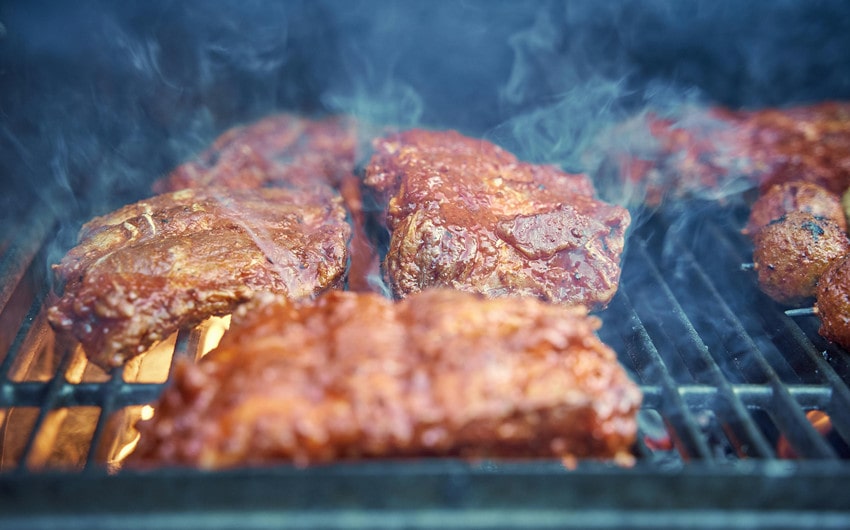
Smoking meat is an art that requires patience, precision, and a few insider tips to perfect. Here are some essential tips and tricks to help you achieve delicious, smoky results every time:
1. Choosing the Right Wood
Types of Wood: The type of wood you use significantly affects the flavor of your smoked meat. Common woods for smoking include hickory, mesquite, apple, cherry, oak, and pecan. Hickory and mesquite offer strong, bold flavors, while fruit woods like apple and cherry provide a sweeter, milder smoke.
Wood Preparation: Ensure your wood is well-seasoned and free of mold. Green or wet wood can produce bitter smoke and uneven burning. Soak wood chips in water for at least 30 minutes before using them to create a more controlled, slow burn.
2. Maintaining the Correct Temperature
Steady Heat: Consistent temperature is crucial for even cooking and preventing meat from drying out. Most smoked meats benefit from a low and slow approach, with temperatures typically between 225°F and 250°F.
Temperature Control: Use a reliable smoker that allows for precise temperature control. A dual-probe thermometer can monitor both the internal temperature of the meat and the smoker’s ambient temperature. Adjust vents and fuel sources as needed to maintain a steady heat.
3. Marinating and Seasoning
Dry Rubs: Dry rubs are a blend of spices and herbs that add flavor and form a delicious crust on the meat. Apply the rub generously and let it sit for at least a few hours, or overnight, to penetrate the meat.
Marinades: Marinades can infuse meat with additional flavors and help keep it moist. Common ingredients include soy sauce, Worcestershire sauce, apple cider vinegar, olive oil, and a variety of herbs and spices. Marinate meat for at least 4 hours, or overnight, for the best results.
Brining: Brining involves soaking meat in a saltwater solution, sometimes with added sugar and spices, to enhance moisture and flavor. Brining is especially beneficial for poultry and pork. Brine for a minimum of 4 hours, or up to 24 hours, depending on the size and cut of meat.
4. Smoke Ring Formation
A smoke ring is a pink layer just beneath the surface of smoked meat, prized for its flavor and appearance. It forms due to a chemical reaction between the meat’s myoglobin and nitrogen dioxide in the smoke.
To enhance smoke ring formation, ensure proper airflow in your smoker. Avoid wrapping meat too early, as this can limit smoke penetration. Using wood with higher nitrogen dioxide content, such as oak or hickory, can also help.
5. Moisture Retention
Water Pan: Use a water pan in your smoker to maintain humidity and keep the meat moist. The steam from the water helps prevent the meat from drying out during the long cooking process.
Spritzing: Spritz the meat with a mixture of water, apple juice, or vinegar every hour or so. This adds moisture to the surface and helps develop a flavorful crust. Use a spray bottle for even application.
6. Proper Wrapping
Foil vs. Butcher Paper: Wrapping meat in aluminum foil or butcher paper can help retain moisture and speed up the cooking process. Foil traps more steam, resulting in a tender, juicy texture, while butcher paper allows the meat to breathe, preserving the bark.
When to Wrap: Wrap the meat when it reaches an internal temperature of around 160°F. This is typically when the meat hits the “stall,” a phase where the temperature plateaus due to moisture evaporation.
7. Resting the Meat
Resting allows the juices to redistribute throughout the meat, resulting in a more flavorful and moist final product. Cutting into the meat too soon can cause the juices to spill out, leaving the meat dry.
Let the meat rest for at least 30 minutes, or up to 1 hour for larger cuts. Keep the meat wrapped in foil or butcher paper during the resting period. For longer rests, place the wrapped meat in an insulated cooler (without ice) to maintain its temperature.
8. Experimentation and Patience
Experiment with various cuts of meat to discover your favorites. Each cut has unique qualities and flavors that can be enhanced through smoking.
Smoking meat is a slow process that requires time and patience. Rushing the process can lead to tough, dry meat. Enjoy the journey and take your time to achieve the best results.

